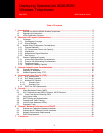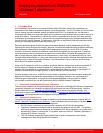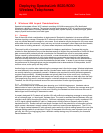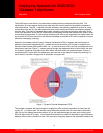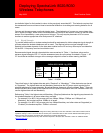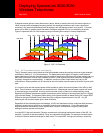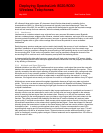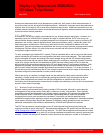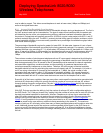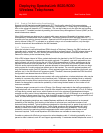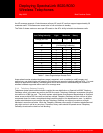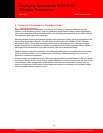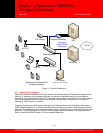
Deploying SpectraLink 8020/8030
Wireless Telephones
May 2009 Best Practices Guide
2 Wireless LAN Layout Considerations
SpectraLink handsets utilize a Wi-Fi network consisting of WLAN access points (APs) distributed
throughout a building or campus. The required number and placement of APs in a given environment is
driven by multiple factors, including intended coverage area, system capacity, access point type, power
output, physical environment, and radio types.
2.1 Coverage
One of the most critical considerations in deployment of SpectraLink handsets is to ensure sufficient
wireless signaling coverage. Enterprise Wi-Fi networks are often initially laid out for data applications and
may not provide adequate coverage for voice users. Such networks may be designed to only cover areas
where data devices are commonly used, and may not include coverage in other areas such as stairwells,
break rooms or building entrances – all places where telephone conversations are likely to occur.
The overall quality of coverage is more important for telephony applications. Coverage that may be
suitable for data applications may not be seamless enough to support the requirements of VoWLAN. Most
data communication protocols provide a mechanism for retransmission of lost or corrupted packets.
Delays caused by retransmissions are not harmful, or even discernable, for most data applications.
However, the real-time nature of a full-duplex telephone conversation requires that voice packets be
received correctly within tens of milliseconds of their transmission. There is little time for retransmission,
and lost or corrupted packets must be discarded after limited retries. In areas of poor wireless coverage,
the performance of data applications may be acceptable due to retransmission of data packets, but for
real-time voice, audio quality will likely suffer.
Another factor to consider when determining the coverage area is the device usage. Wireless telephones
are used differently than wireless data devices. Handset users tend to walk as they talk, while data users
are usually stationary or periodically nomadic. Wireless voice requires full mobility while data generally
requires simple portability. Wireless handsets are typically held close to the user’s body, introducing
additional radio signal attenuation. Data devices are usually set on a surface or held away from the body.
The usage factor may result in reduced range for a wireless telephone as compared with a data device.
Therefore, the WLAN layout should account for some reduction of radio signal propagation.
2.1.1 Overlapping Coverage
Wi-Fi cell overlap must be considered when planning your VoWLAN deployment. Handsets make a
determination to roam in less than half the overlapping coverage area. Therefore, the coverage area must
be adequate enough so that when a voice user is moving, the handset has time to discover the next AP
before signal on the existing AP becomes too weak.
A properly designed Wi-Fi network will position APs with sufficient overlapping coverage to ensure there
are no coverage gaps, or “dead spots”, between them. The result is seamless handoff between APs and
excellent voice quality throughout the facility. Sufficient overlapping coverage is usually considered 15%
to 20% signal overlap between AP cells in a deployment utilizing maximum transmit power for both
handsets and APs. Smaller cells will need larger overlaps due to the potential for much smaller cell size
which causes a decrease in overall overlap from a maximum transmit power deployment. The 15% to
20% of signal overlap between AP cells generally works well with a typical walking speed of the user (the
average walking speed of an individual is 3 mph). If the speed of the moving user is greater (such as a
golf cart, fork lift or running/jogging) then a different overlap strategy may be necessary for successful
handoff between APs.
5
©2009 Polycom, Inc. All rights reserved.
Polycom and the Polycom logo are registered trademarks of Polycom, Inc. All other trademarks are the property of Polycom, Inc. or their respective companies.




